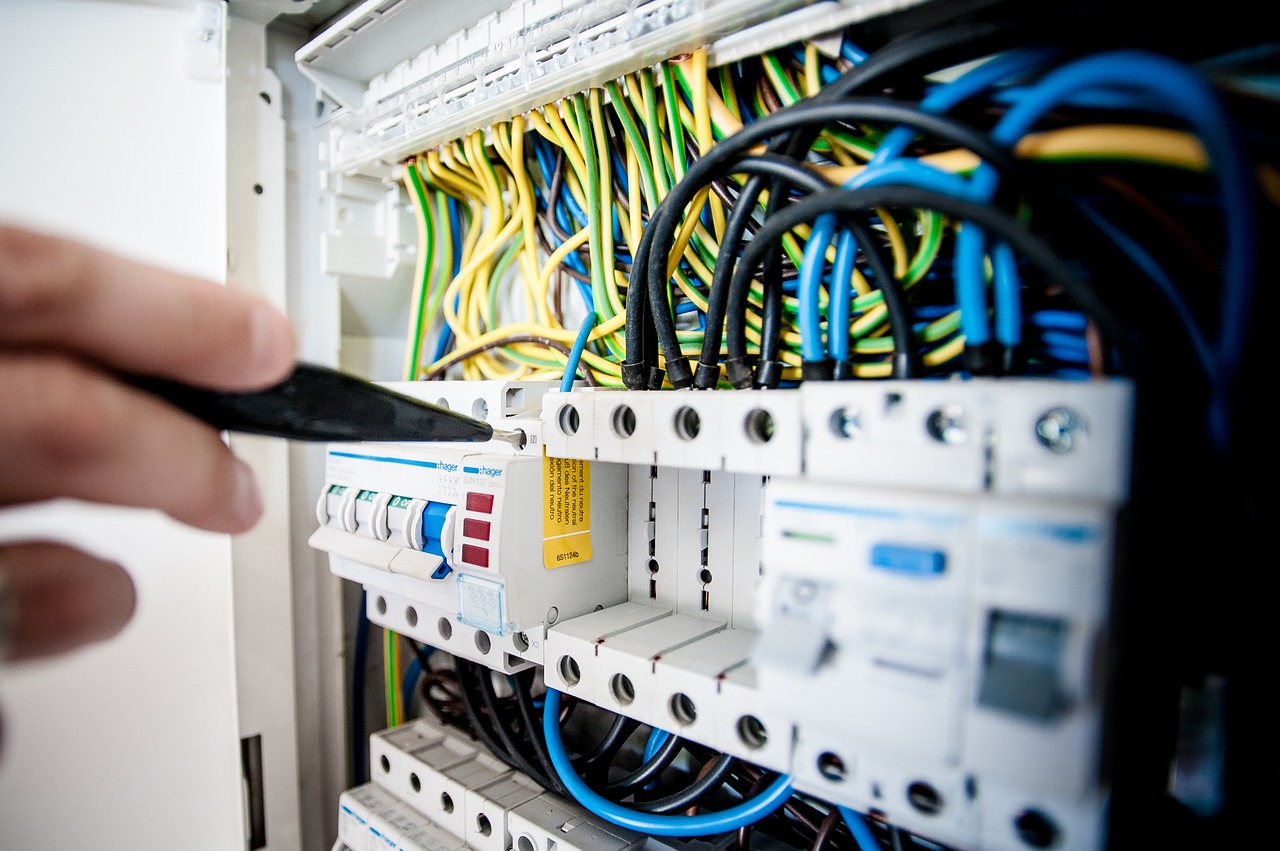

At its core, a structured cabling system is simply an organized plan to handle all of the communication cabling needs in a commercial or residential building. Flexibility and longevity are key; a properly structured cabling system should be cable of supporting a wide variety of different communications systems for at least ten years with minimal revision.
A building’s structured cabling system is also sometimes called a premises distribution system. The goal is to provide a convenient and practical path for delivering every sort of cabling need, including telephone systems, computer networks, video systems, imaging systems, and others.
Contents
A key part of the structured cabling philosophy is building a robust system that is workable with a variety of different products from different vendors. Making changes to the communications cabling carried by the system should involve minimal expense and maintenance while the system is in operation.
A cabling system includes many features beyond cables themselves. It also includes cable pathways, equipment for grounding and bonding the system, support structures, and dedicated building spaces. Planning a structured cabling system involves setting standards for support and maintenance as well as installation.
Regulatory Standards
Cabling is governed by three main statutes based on geographic location:
EIA/TIA 568-C: This standard is favoured in the United States
ISO/IEC 11801: This is an international standard
CENELEC EN 50173: The standard is favoured throughout Europe.
The American standard (568-C) is broken down into four main sections:
Section 0: Generic Telecommunications Cabling
Section 1: General Requirements For Telecommunications Cabling In Commercial Buildings
Section 2: Component And Cabling Standards For Balanced Twisted-Pair Telecommunications
Section 3: Fiber Optic Cabling Components Standards
A building’s full cabling system is made up of independent subsystems that increase functionality and flexibility while retaining modularity for ease of operation.
Subsystems can be identified by the fact that they are each designed and installed independently. The system is not complete until all of the cabling subsystems are interconnected to provide full functionality for end users.
Compartmentalizing the system’s function into independent subsystems makes is easy to add or change one part of the system without affecting the others.
Key subsystems found in virtually all structured cabling systems include:
1) Work Area Subsystem
2) Horizontal Subsystem
3) Telecommunications Backbone
4) Equipment Room (ER)
5) Telecommunications Room (TR)
6) Entrance Facility (EF)
This is where telecommunications devices and end users connect to the structured cabling system. Connections at this level tie into the wall outlet which leads to the horizontal cabling. All of these components can be included in a work area subsystem:
a) Cat5e, Cat 6, adapter cables, fibre patch cords (jumpers), and modular cords
b) Adapters (e.g. baluns) that change a cable’s signal or impedance
c) Station equipment, e.g. telephones, computers, data terminals, fax machines, etc.
Horizontal cabling links individual work areas to telecommunications closets. The work-area terminations for horizontal cabling are telecommunications outlets. Horizontal subsystems can also include:
a) Cabling from patch panels to work areas
b) Telecommunications outlets
c) Cable terminations
d) If permitted, cross connections
These subsystems are designed to link the dedicated telecommunication spaces (entrance facilities, telecommunications rooms, and equipment rooms) described below.
Besides the backbone cabling itself, the backbone subsystem can also include mechanical terminations, patch cables, cross-connect cables, and any other equipment that may be required to tie backbone cabling together.
Equipment rooms are spaces specifically dedicated to handling specific telecommunication or data equipment needs. The complexity and fragility of such equipment demand dedicated spaces where access and environmental conditions can be precisely controlled.
The equipment room is a space (frequently centralized) that can be used to operate equipment more complicated and sophisticated than that housed in the entrance facility or telecommunications rooms. Equipment used for telecommunications and data networking, including routers, hubs, and switches, can be sited here. Cabling specifications call for backbone cabling to terminate in the equipment room.
The telecommunications room is sometimes colloquially referred to as a telecommunication closet. The purpose of this space is to terminate horizontal and backbone cabling. The hardware and equipment required for this termination need building space; this is what the telecommunications room provides.
In some systems, further networking equipment can be installed in the telecommunications room. Examples include LAN hubs, routers, switches, and repeaters. The telecommunications closet is where backbone rooms terminate.
The entrance facility is the point where a structured cabling system meets the larger cable networks of service providers like the telephone company. The connection between the facility’s cabling system and the providers’ networks is essential to provide building occupants with any sort of telecommunications functionality.
All cabling from external sources – including antennae pathways and inter-building cabling – should be planned to enter the building at a single centralized point. Local building regulations typically oblige service providers to terminate their lines within 50 feet (or less) of an entrance to a building.
The year 2020 and the pandemic threw a wrench into everyone's plans. Companies that were…
AI is successful in boosting the productivity of organizations while helping them save cost and…
Suppose you battle back discomfort or other associated ailments due to sitting for lengthy periods…
In November 2023, investor Maksym Krippa acquired the Parus Business Center, redefining the commercial real…
Programmers create computer programs, mobile solutions and also analyse the needs of their clients and…
A trip to Santiago is sure to be memorable by default as simply seeing this…